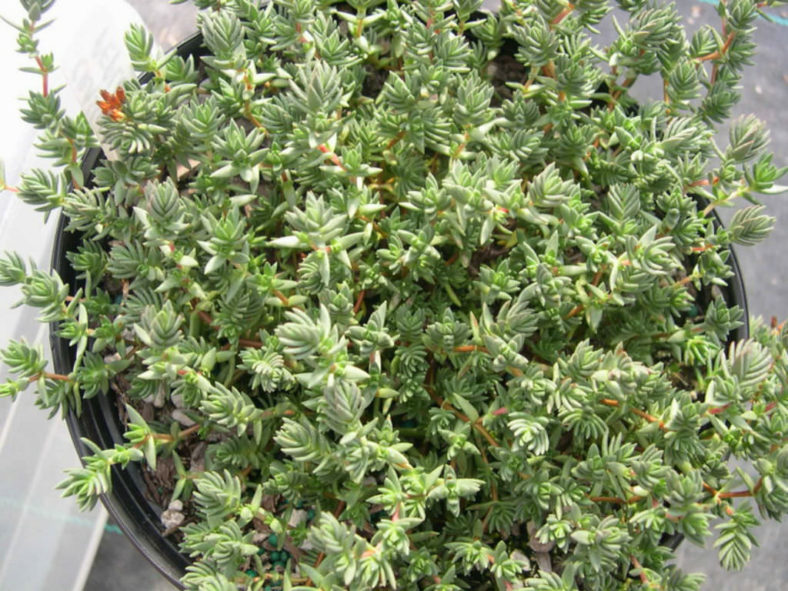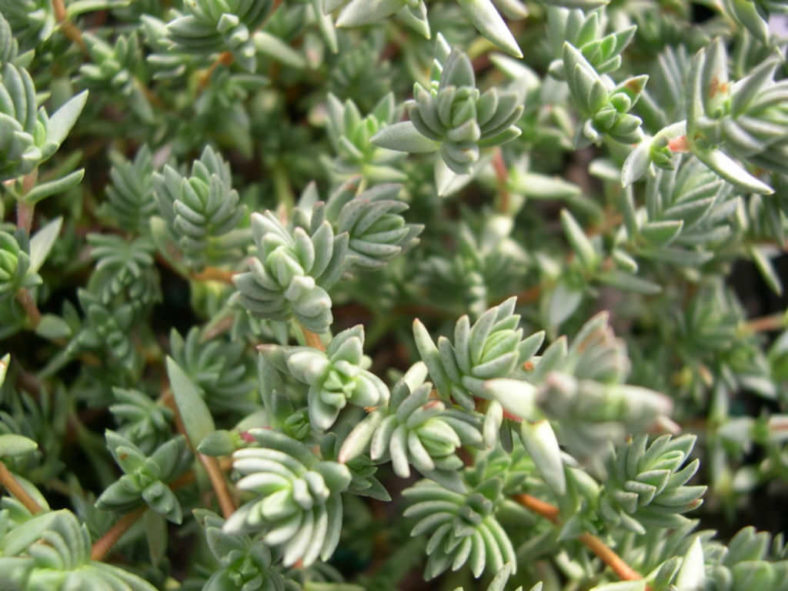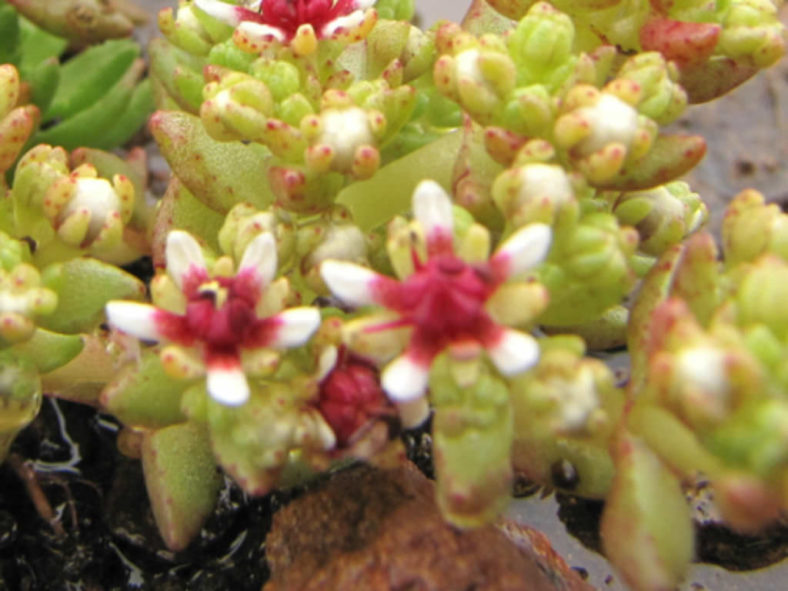Scientific Name
Crassula peploides Harv.
Synonym(s)
Crassula galpinii
Scientific Classification
Family: Crassulaceae
Subfamily: Crassuloideae
Genus: Crassula
Etimology
The specific epithet "peploides" (pronounced "pep-LOY-deez") means "resembling Peplis" and refers to the likeness of this species to Euphorbia peplis.
Origin
Crassula peploides is native to Lesotho and South Africa.
Description
Crassula peploides is a low-growing succulent with branched, pale red, trailing stems and fleshy, green leaves arranged in small rosettes at the branch tips. It can grow up to 3 inches (7.5 cm) tall and spreads, forming a mat over time. The leaves are narrow, almost cylindrical or barrel-shaped, but flat on the inside and slightly curving. The leaves taper to somewhat rounded or pointed tips. Depending on growing conditions, the leaf surface is rough, sometimes with red mottling and overall reddish or blue-green coloring.
In summer and fall, Crassula peploides produces attractive white and pink flowers.

How to Grow and Care for Crassula peploides
Hardiness: USDA hardiness zones 5a to 10b: from -20°F (-28.9°C) to 40°F (4.4°C).
Crassulas are easy to grow but susceptible to mealybugs and fungal diseases. Overwatering is sure to be fatal, as with all succulents, so err on the side of being too dry rather than too wet. Never let your plant sit in water. If you water from beneath by allowing the plant to sit in a saucer, pour off any excess water after a few minutes.
These succulents are generally started by division, offsets, or leaf cuttings. Crassulas can be easily propagated from a single leaf. Sprout leaves by placing them into a potting mix for succulents, then covering the dish until they sprout.
Repot as needed, preferably during the warm season. To repot your Crassula, ensure the soil is dry before repotting, then gently remove the pot. Knock away the old soil from the roots, removing any rotted or dead roots. Treat any cuts with a fungicide. Place the plant in its new pot and backfill it with potting soil, spreading the roots as you repot. Leave the plant dry for a week or so, then begin to water lightly to reduce the risk of root rot.
Learn more at How to Grow and Care for Crassula.
Links
- Back to genus Crassula
- Succupedia: Browse succulents by Scientific Name, Common Name, Genus, Family, USDA Hardiness Zone, Origin, or cacti by Genus
Photo Gallery
Click on a photo to see a larger version.


